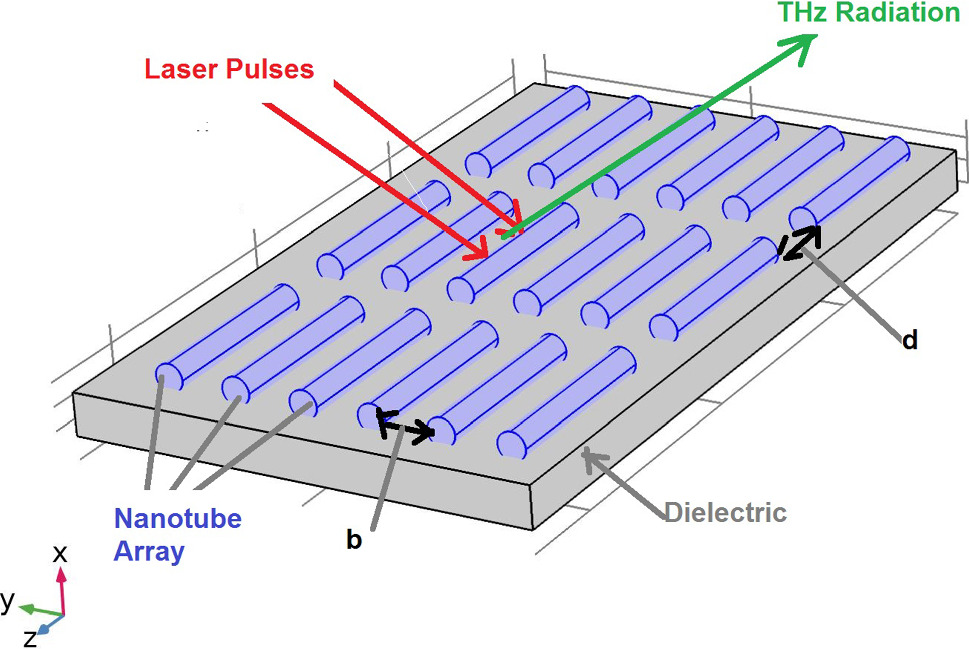https://doi.org/10.1140/epjd/s10053-023-00612-w
Regular Article – Optical Phenomena and Photonics
Terahertz radiation generation driven by beating of chirped laser pulses in single-walled carbon nanotubes by applying tapered magnetic field
Department of Physics, University of Guilan, 41335-1914, Rasht, Iran
b
rnmt3673@gmail.com
c
SJafari@guilan.ac.ir
Received:
16
June
2022
Accepted:
6
February
2023
Published online:
27
March
2023
In this study, the terahertz (THz) radiation generation from beating of two chirped lasers in the carbon nanotubes is investigated in the presence of an external tapered magnetic field. The electric field of chirped laser beams interacts with the carbon nanotubes, leads to the ionization of the carbon atoms, and produces a plasma medium. Then, the interaction of the laser beams with the electronic clouds of plasma generates ponderomotive force that leads to the creation of a macroscopic electron current at the beat frequency which can generate THz radiation. Each nanotube acts as an oscillating electrical dipole and produces terahertz radiation. The results indicated that in the presence of a tapered magnetic field, the THz radiation power can be tuned, and in this case, more THz power is generated than a uniform magnetic field. It was also found that the THz power is produced at  when the beat frequency is equal to the surface plasmon resonance. Moreover, the radius and length of carbon nanotubes have significant effects on the terahertz power, so that with increasing these values, terahertz power increases.
when the beat frequency is equal to the surface plasmon resonance. Moreover, the radius and length of carbon nanotubes have significant effects on the terahertz power, so that with increasing these values, terahertz power increases.
Copyright comment Springer Nature or its licensor (e.g. a society or other partner) holds exclusive rights to this article under a publishing agreement with the author(s) or other rightsholder(s); author self-archiving of the accepted manuscript version of this article is solely governed by the terms of such publishing agreement and applicable law.
© The Author(s), under exclusive licence to EDP Sciences, SIF and Springer-Verlag GmbH Germany, part of Springer Nature 2023. Springer Nature or its licensor (e.g. a society or other partner) holds exclusive rights to this article under a publishing agreement with the author(s) or other rightsholder(s); author self-archiving of the accepted manuscript version of this article is solely governed by the terms of such publishing agreement and applicable law.





